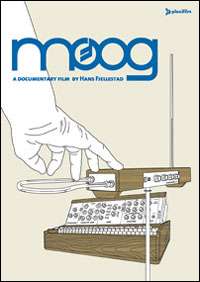| Look up active in Wiktionary, the free dictionary. |
Active may refer to:
- Human Activity
- An active lifestyle, a lifestyle characterized by frequent or various social, intellectual, and (particularly) physical activities
- An "active" in a fraternity or sorority
- Computers and electronics
- Active component, a type of component in electronics
- Active Enterprises, a defunct video game developer
- Sky Active, the brand name for interactive features on Sky Digital available in the United Kingdom and the Republic of Ireland
- Music
- Active Records, a record label
- Active (album), an album by Casiopea
- Ships
- Active (ship), a brigantine which sank in 1810 somewhere in the Tasman Sea
- HMS Active, the name of various ships of the British Royal Navy
- USCS Active (1852), a United States Coast Survey ship in commission from 1852 to 1861
- USCGC Active, the name of various ships of the United States Coast Guard
- USRC Active, the name of various ships of the United States Revenue Cutter Service
- USS Active, the name of various ships of the United States Navy
- Other
- Active volcano, a volcano which erupts regularly
- The active grammatical voice, in which the subject is the agent or actor of the verb
- Active learning, teaching or instruction technique
- ACTIVE, or "Active - sobriety, friendship and peace", a European temperance youth organization formerly known as the European Good Templar Youth Federation (EGTYF)
- Active, the original name of the early steam locomotive Locomotion No 1
See also [link]
| This disambiguation page lists articles associated with the same title. If an internal link led you here, you may wish to change the link to point directly to the intended article. |
https://wn.com/Active

Bioavailability
In pharmacology, bioavailability (BA) is a subcategory of absorption and is the fraction of an administered dose of unchanged drug that reaches the systemic circulation, one of the principal pharmacokinetic properties of drugs. By definition, when a medication is administered intravenously, its bioavailability is 100%. However, when a medication is administered via other routes (such as orally), its bioavailability generally decreases (due to incomplete absorption and first-pass metabolism) or may vary from patient to patient. Bioavailability is one of the essential tools in pharmacokinetics, as bioavailability must be considered when calculating dosages for non-intravenous routes of administration.
For dietary supplements, herbs and other nutrients in which the route of administration is nearly always oral, bioavailability generally designates simply the quantity or fraction of the ingested dose that is absorbed.
Bioavailability is defined slightly differently for drugs as opposed to dietary supplements primarily due to the method of administration and Food and Drug Administration regulations.
Active (1877)
The Active was a wooden ketch that was wrecked on the Oyster bank at the entrance of Newcastle Harbour, New South Wales, near the previously wrecked Colonist on 19 January 1898 while carrying a cargo of ironbark to Morpeth, New South Wales under the command of Captain P. Williams. There were no casualties but the ship was lost. The wreck has not been located, but the approximate co-ordinates of the shipwreck are 32°55′S 151°47′E / 32.92°S 151.79°ECoordinates: 32°55′S 151°47′E / 32.92°S 151.79°E.
References
Further reading
Online databases
Australian National Shipwreck Database
Australian Shipping - Arrivals and Departures 1788-1968 including shipwrecks
Encyclopaedia of Australian Shipwrecks - New South Wales Shipwrecks
Books
Moog
Moog may refer to:
- Robert Moog, inventor of the Moog synthesizer
- Moog synthesizer, sound-generating electronics invented by Robert Moog
- Moog (film), a 2004 biographical film about Robert Moog
- Moog Music, a synthesizer maker founded by Robert Moog
- Willy Moog, philosopher
- Moog synthesizer, sound-generating electronics invented by Robert Moog
- Moog (film), a 2004 biographical film about Robert Moog
- Moog Music, a synthesizer maker founded by Robert Moog

Moog (film)
Moog is a 2004 documentary film by Hans Fjellestad about electronic instrument pioneer Dr. Robert Moog. The film features scenes of Dr. Moog interacting with various musical artists who view Moog as an influential figure in the history of electronic music.
Moog is not a comprehensive history of electronic music nor does it serve as a chronological history of the development of the Moog synthesizer. There is no narration, rather the scenes feature candid conversation and interviews that serve more as a tribute to Moog than a documentary.
The film was shot on location in Hollywood, New York, Tokyo, and Asheville, North Carolina where Moog's company is based. Additional concert performances were filmed in London and San Francisco.
The film's 2004 release was designed to coincide with the fiftieth anniversary of Moog Music, Robert Moog's company that was founded as R.A. Moog Co. in 1954.
Artists who appeared in the film
Moog (code)
MOOG is an astronomical software package. It is an example of Fortran code that performs a variety of spectral line analysis and spectrum synthesis tasks under the assumption of local thermodynamic equilibrium. Moog uses a model photosphere together with a list of atomic or molecular transitions to generate an emergent spectrum by solving the equation of radiative transfer.
The typical use of MOOG is to assist in the determination of the chemical composition of a star, e.g. Sneden (1973). This paper contains also the description of the first version of the code and has been cited about 240 times as of 2008-04-24 by publications in international journals studying the abundances of chemical elements in stars.
The software package has been developed and is maintained by Christopher Sneden, University of Texas at Austin. The current supported version of the code was released in August 2010 and is described in the MOOG User's Guide (see references below). Moog is written in FORTRAN 77.

